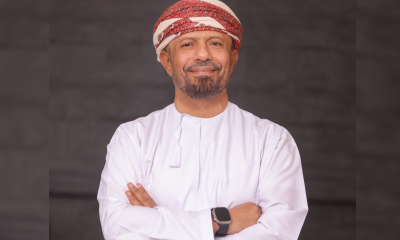Banking & Finance
Islamic finance could help in meeting sustainable development goals: S&P
Islamic finance could contribute to meeting some of the sustainable development goals adopted by the UN General Assembly under its 2030 agenda, said Standard & Poor’s Ratings Services in a
report, “Islamic Finance Could Aid Modestly In Achieving Sustainable Development Goals.”
Islamic finance could contribute to meeting some of the sustainable development goals adopted by the UN General Assembly under its 2030 agenda, said Standard & Poor’s Ratings Services in a
report, “Islamic Finance Could Aid Modestly In Achieving Sustainable Development Goals.”
Agreed on in September 2015, the UN General Assembly set 17 sustainable development goals (SDGs) and 169 measurable targets centered on five pillars: people, planet, prosperity, peace, and partnership. The UN has stressed that striving for sustainable development will require a revitalized global partnership between all stakeholders.
“Islamic finance could play a role–a modest one at least–in meeting some of the SDGs, particularly those that are in line with the core principles of Islamic finance,” said Mr. Mohamed Damak, Standard & Poor’s Global Head of Islamic Finance.
Some sukuk issues by global multilateral lending institutions over the past few years illustrate this point, although their overall amount remains small compared with multilateral lending institutions’ (MLIs) conventional debt issuance. “Still, Islamic finance will likely remain a moderate contributor due to the industry’s small size and the issues it has yet to resolve to unlock its global potential,” added Mr. Damak.
However, according to the S&P the Islamic finance’s contribution to financing some SDGs will likely remain modest. This is mainly because of the industry’s small size compared with the overall financial system, even in the economies of OIC member countries.
It estimate Islamic finance assets were worth about $2.1 trillion at year-end 2015, compared with more than $7 trillion of cumulative GDP of the economies of the OIC countries at the same date. Similarly, S&P projects that sukuk issue volumes will reach $50 billion-$55 billion in 2016, representing only a negligible fraction of conventional issues globally. Assuming the industry continues its efforts to improve standardization and reduce the usual timeframe for issuing sukuk, Islamic finance could attract new issuers such as MLIs or governments that might see the industry as a way to diversify their investors’ base and fund their SDG agendas.
-

 Banking & Finance2 weeks ago
Banking & Finance2 weeks agoOman Oil Marketing Company Concludes Its Annual Health, Safety, Environment, and Quality Week, Reaffirming People and Safety as a Top Priority
-

 Economy2 months ago
Economy2 months agoMaal Card: What Oman’s New National Payment Card Means for Everyday Users
-

 Leaders Speak2 months ago
Leaders Speak2 months agoDhofar International Development and Investment Company: Driving Sustainable Growth and Strategic Synergies in Oman’s Investment Landscape
-

 Events2 months ago
Events2 months agoOER Corporate Excellence Awards 2025 Honours Entities and Innovations in Oman
-

 News2 months ago
News2 months agoSheikh Suhail Bahwan, Chairman of Suhail Bahwan Group, Passes Away
-

 News1 month ago
News1 month agoOIG Appoints New CEO to Lead Its Next Chapter of Excellence
-

 Economy2 months ago
Economy2 months agoOman Unveils Official Omani Rial Symbol in Landmark Move to Boost Global Currency Presence
-

 News1 month ago
News1 month agoReport: How India & The Middle East Are Exploiting Immense Economic Synergies




























You must be logged in to post a comment Login